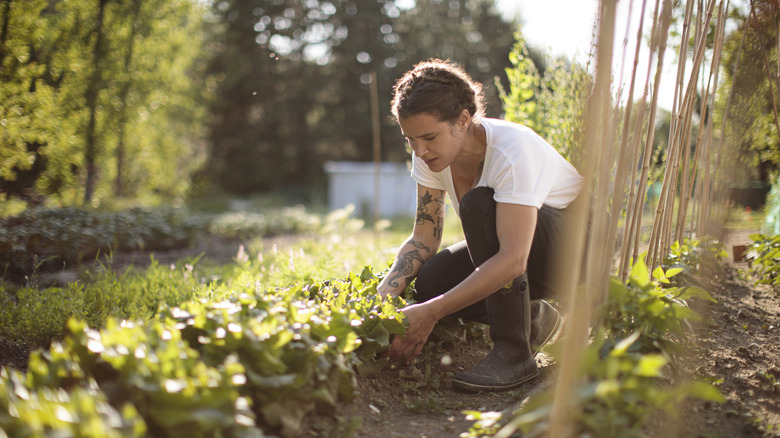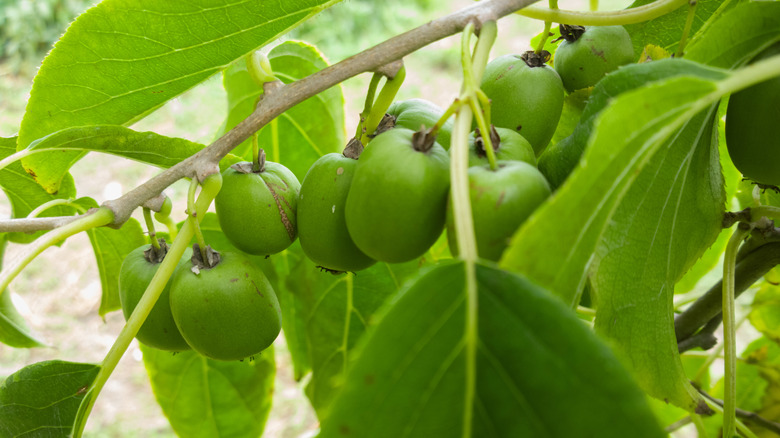The Invasive Vine To Avoid Growing (& A Native Alternative To Plant Instead)
It takes a lot of bad behavior for a plant to land on the USDA's invasive species list, but kudzu (Pueraria montana) has earned this notoriety. Nicknamed "the vine that ate the South," it has stamped out countless native plants, including large trees, in this region of the United States. This perennial climber is also invasive in most of the East and Midwest, where multiple states are trying to keep it from proliferating. In other words, it's considered one of the most invasive vines in the country.
Many plants grow aggressively, but not all aggressive plants are invasive. It's usually when they cause environmental or economic harm in a particular geographic area that they are deemed invasive there. Knowing which vines are invasive in your region is essential for keeping them at bay. Like many other invasive species, kudzu came to the U.S. in the late 19th century to feed farm animals and add beauty to landscapes. The purple flowers look pretty, but the plant grows a foot per day. Frequent planting occurred in the Southeast from the 1930s through the 1950s, when the Soil Conservation Service touted kudzu as an erosion-control wonder. Few suspected this perennial climber would engulf telephone poles, homes, and more.
Node-filled runners help kudzu grow at lightning speed. When nodes touch the soil, they sprout new root crowns and spread the plant. Plus, kudzu produces taproots that burrow deep into the soil, making it hard to kill. Since it's so tough to control and eradicate, don't plant it, even if it isn't invasive in your region. If you want a vining plant for your landscape, there are plenty of native varieties to consider.
Meet the hardy kiwi
Dutchman's pipe (Aristolochia tomentosa), ornamental hops, and grapes are a few native vines that can enliven your landscape. One of the most charming choices, however, is the hardy kiwi (Actinidia arguta and Actinidia kolomikta). In addition to offering climbing greenery, it grows kiwi berries, which are like miniature versions of the kiwi fruits found in supermarkets. In fact, they might even be better since they don't require peeling. The fruits typically appear a few years after the vine establishes itself. Since hardy kiwis can handle hot and cold weather, including temperatures that dip well below zero, they do well in most parts of the United States. The 'Arctic Beauty' cultivar thrives in USDA hardiness zones 3 through 8, while the sweet 'Anna' variety does well in zones 5 through 10.
Hardy kiwis are also known for their lush leaf growth, which can attract birds and add privacy to your yard. Some varieties, such as 'Arctic Beauty', have multicolored foliage. When supported by a trellis, fence, or pergola — a smart idea since the vines can get heavy — they'll easily grow at least 20 feet tall. Hardy kiwis' tiny, white flowers smell like lily of the valley (Convallaria majalis), and you usually need male and female vines to get fruit. These plants also appreciate well-drained soil, full to partial sunlight, and regular trimming, which is similar to how you'd prune a grapevine to encourage growth.

